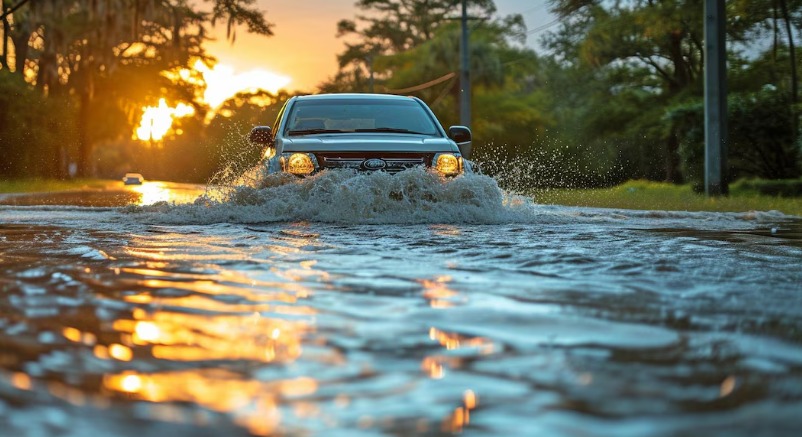Timothy Albrite
The rainy season is here and motorists and pedestrians alike are faced with the challenge of navigating wet and flooded roads.
Risks Associated with Water;
- Weakened Ground
- Getting stuck, adding an unwelcome delay to your journey.
- Encounters with Reptiles
- Potential for sliding
- Infected water
- Electrocution hazards
It is essential to arm yourself with these practical tips to ensure a secure journey through the watery roads.
1. Assess the Water Depth
Before attempting to cross, gauge the water’s depth. Use a reliable measuring tool such as a stick or your vehicle’s side mirrors to estimate the water level accurately.
Fred Majiwa of St.Johns Ambulance suggests that, if absolutely necessary, and after careful assessment, crossing water below knee level might be permissible.
While the risks involved in crossing moving water above knee level are significant, there is a cautious consideration for water below knee level.
Motorists must exercise extreme caution, armed with the knowledge that water below knee level doesn’t eliminate risks but may present a more manageable scenario if approached with vigilance and adherence to safety measures.
2. Follow Tire Tracks
If others have successfully crossed the flooded area, follow their tire tracks. This can help you identify potential pitfalls and choose a safer path.
3. Maintain a Slow, Steady Speed
If you decide to proceed, maintain a slow, steady speed to create a bow wave in front of your vehicle. This helps in displacing water and reduces the risk of stalling.
4. Avoid Fast-Flowing Water
Steer clear of areas where water is flowing rapidly. Fast currents increase the risk of losing control and being swept away.
5. Choose the Right Vehicle
Opt for a high-clearance vehicle like an SUV, if available. These vehicles are better equipped to handle flooded roads compared to smaller cars.
6. Test Brakes After Crossing
Once through the flooded area, gently tap your brakes to ensure they are still functioning properly. Wet brakes may require some time to regain their effectiveness.
7. Keep Engine Running
If your vehicle stalls in the water, keep the engine running. Attempting to restart it while submerged can lead to irreparable damage.
8. Watch for Debris
Floodwaters may carry debris such as branches and rocks. Be vigilant and avoid collisions with unseen obstacles.
9. Be Wary of Hidden Potholes
Flooded roads may hide potholes and road damage. Proceed cautiously to prevent damage to your vehicle
10. Turn Around, Don’t Drown
If in doubt, turn around. Never underestimate the power of moving water. It’s always safer to find an alternative route than to risk navigating through uncertain waters.
11. Check for Road Closures
Stay informed about road closures and updates from local authorities. Avoid areas marked as dangerous or closed to traffic.
12. Emergency Escape Plan
Always have an emergency escape plan in mind. If the situation worsens, be prepared to abandon your vehicle and seek higher ground.
Driving in the Rain; How to be Safe in Extreme Weather Conditions
Avoid parking under trees, or next to perimeter walls. Avoid driving on unfamiliar roads especially at night or when flooded.
Reminder: Be mindful of other road users; Do not splash water on pedestrians or cyclists.

Great insights especially now.
Thank you.
Why